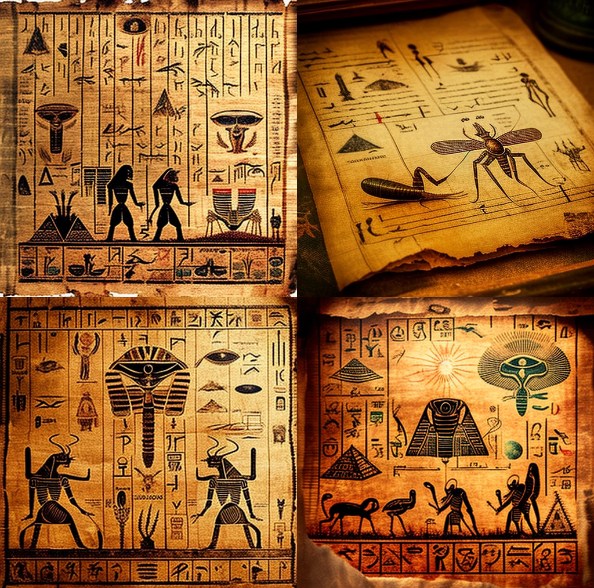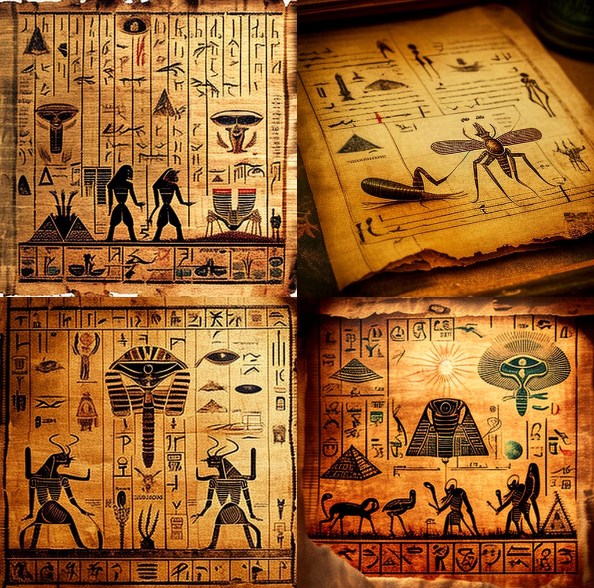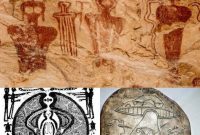The ancient world is filled with mysteries that have fascinated scholars and enthusiasts for centuries. Among the most intriguing are the scripts and hieroglyphics left behind by ancient civilizations. These inscriptions are not merely relics of the past but are keys to understanding the lives, beliefs, and advancements of these cultures. Egyptian hieroglyphics, in particular, have captivated the imagination of many, offering a glimpse into a world that flourished thousands of years ago. This article explores the journey of decoding ancient scripts, the secrets hidden within Egyptian hieroglyphics, and the broader implications for our understanding of human history.

## The Challenge of Decoding Ancient Scripts
### The Complexity of Ancient Languages
Decoding ancient scripts is a complex and painstaking process. Unlike modern languages, many ancient scripts have no direct descendants or living speakers, making them challenging to decipher. These scripts often used symbols and pictographs, each with multiple meanings depending on context. Scholars must rely on a combination of linguistic knowledge, historical context, and often a bit of educated guesswork to interpret these ancient texts.
### Breakthroughs in Decipherment
One of the most significant breakthroughs in the field of decipherment was the decoding of the Rosetta Stone. Discovered in 1799, the Rosetta Stone features the same text written in Greek, Demotic, and Egyptian hieroglyphics. The Greek inscription provided the key to understanding the other two scripts, allowing scholars to make significant progress in translating Egyptian hieroglyphics. Jean-François Champollion, a French linguist, played a pivotal role in this endeavor, publishing his findings in 1822 and effectively unlocking the secrets of Egyptian writing.
## Egyptian Hieroglyphics: The Language of the Gods
### Origins and Evolution
Egyptian hieroglyphics are one of the oldest writing systems in the world, with roots tracing back to around 3300 BCE. Initially used primarily for religious texts and monumental inscriptions, hieroglyphics evolved over time to include a more simplified script known as Hieratic, and later Demotic, for everyday use. The hieroglyphic script is a combination of logographic and alphabetic elements, with over 700 distinct symbols.
### The Purpose of Hieroglyphics
Hieroglyphics were considered sacred and were often referred to as “the words of the gods.” They were used extensively in temples, tombs, and on artifacts to record religious texts, royal decrees, historical events, and administrative documents. The belief was that writing itself had magical properties, and thus, hieroglyphics were imbued with divine significance.
### Symbolism and Meaning
Each hieroglyphic symbol can represent an object, a sound, or an idea. For instance, the symbol for “ankh” represents life, while the “djed” pillar symbolizes stability. These symbols could be combined in complex ways to convey detailed and nuanced meanings. Understanding the context in which these symbols were used is crucial for accurate interpretation.
## Unlocking the Secrets
### Advances in Technology
Modern technology has revolutionized the field of Egyptology. High-resolution imaging, 3D scanning, and computer algorithms allow for more precise analysis of hieroglyphic texts. These tools help to uncover details that were previously invisible to the naked eye, such as faded inscriptions or hidden layers of writing.
### New Discoveries
Recent discoveries continue to shed light on the secrets of Egyptian hieroglyphics. For example, the discovery of the tomb of Tutankhamun in 1922 provided a wealth of inscriptions and artifacts that have been meticulously studied over the decades. Similarly, ongoing excavations at sites like Saqqara and the Valley of the Kings continue to reveal new texts and inscriptions that enhance our understanding of ancient Egypt.
### Deciphering Hidden Messages
Scholars have uncovered various hidden messages within hieroglyphic texts, from political propaganda to religious hymns. For instance, inscriptions in the temples of Karnak and Luxor reveal details about the reigns of pharaohs, their conquests, and their relationships with the gods. These texts not only provide historical data but also offer insights into the religious and cultural mindset of the ancient Egyptians.
## Broader Implications
### Understanding Ancient Cultures
Decoding ancient scripts and hieroglyphics offers invaluable insights into the daily lives, beliefs, and societal structures of ancient civilizations. These texts reveal information about governance, trade, social hierarchies, and personal relationships, painting a comprehensive picture of how these societies functioned.
### Impact on Modern Knowledge
The study of ancient scripts has a profound impact on modern knowledge. It not only enhances our understanding of history but also influences contemporary fields such as linguistics, anthropology, and archaeology. The techniques developed for deciphering ancient texts are applied in various scientific and technological fields, showcasing the interdisciplinary nature of this research.
### Cultural Heritage and Preservation
Preserving and studying ancient scripts is crucial for maintaining our cultural heritage. These texts are a testament to human ingenuity and creativity, reflecting the intellectual achievements of our ancestors. Efforts to decode and understand them ensure that this knowledge is not lost to time and continues to inspire future generations.
## A Journey of Discovery
Decoding ancient scripts and Egyptian hieroglyphic secrets is a journey that combines historical detective work, linguistic expertise, and cutting-edge technology. Each discovery brings us closer to understanding the complexities of ancient civilizations and the minds of those who lived thousands of years ago. As we continue to unravel these mysteries, we gain a deeper appreciation for the rich tapestry of human history and the enduring legacy of the written word. The study of hieroglyphics and other ancient scripts remains a vibrant and dynamic field, promising new revelations and insights for years to come.




